What is a Level Sensor? Definition of Level Sensors and Market Overview
A Level Sensor is a tool designed to measure, monitor, and help maintain liquid (occasionally solid) levels within a certain space. These sensors find their primary use in automotive and manufacturing industries, as well as civil engineering, household appliances, etc.
In this article, we will be going through classifications of the level sensors, their strong and weak points based on their applications, as well as trying to identify what is new in the market of fill level sensors.
Level Sensor Market Size & Growth
Newsflash, the level sensor market is growing rapidly! Since 2020 downtimes not only is the pace back up, but it is even faster, due to backlog orders across all use industries. So much so that the growth is expected in CAGR of 7.5 %, to reach USD 6.1 billion in 2025, counting from the USD 4.3 billion in 2020 (counting with the downtimes of the year).
One of the main key factors for the increasing demand is the relative growth of construction activities, especially in the commercial and housing markets (specifically in China, Australia, USA, India, etc.). Let’s go through some trends particular to the level sensor industry:
Competition (Biggest Players in the Market of Level Sensors)
From the tier 1 companies, the ones that hold major shares in the level sensors industry are surely Endress+Hauser, Siemens, ABB, Honeywell, and Emerson. These companies tend to acquire exceptional level sensors tech manufacturers, R&D hubs, and small-scale level sensors developers and manufacturers who have experience in niche technology, a well-established presence in the geographical area, and a sales network.
Sensor Size Reduction
Just like in most sensor-related markets a size reduction is an increasing trend with higher demand from the market. The size reduction of sensors gave the opportunity for level sensing in automotive, aerospace & defence, petrochemical, energy, food & beverage, and other industries. This growth has largely started with the MEMS tech involvement in the water level sensors market.
Level Sensor Focus Segment
Based on the technology, the contactless segment of level sensors is expected to take the largest piece of the pie in the level sensors market (2020–2025).
Larger share of the non-contact segment of the market is thanks to their wider adoption in a variety of applications in the market, due to their higher accuracy, multifunctionality and relative ease of setup, they are set to replace most contact sensors within the water level sensor market.
Continuous Monitoring Type as a Favorite of the Market
In terms of the type of monitoring, the continuous one is set to take the larger share of the level sensor market within 2020–2025. As these sensors provide a more accurate real-time data on fluid level – they are objectively a preferred option for the adopters of level sensors especially in water level monitoring.
Applications and industries
Especially for water level sensing – the sensor technologies come in a variety of types and methods of measurement, and their applications / final use-cases differ or often overlap. When considering the question “Which fluid level sensor should I choose?'' The customer should consider the purpose of the monitoring, the atmosphere and density of the liquid, as well as temperature and possible waves (atmospheric and positional changes affected by external factors). Some of the common applications of level sensors, diversified by the end-users are Wastewater, Automotive, Aerospace, Consumer, Energy & Power, Healthcare, Oil & Gas, Chemical, Pharmaceutical, and many others. Let’s go through some of them and explore the widest use and biggest expectations from the fill level sensors.
The Automotive Industry
This industry has a large demand for level sensors to make sure the vehicle functions properly and stays put as a safety-critical system. For vehicles, liquid level sensors are used to detect i.e. the volume of fuel left in the fuel tank, the level of brake fluid, coolant, or washer fluid.
The Break fluid Level sensors are of great importance as a low level of this fluid can mean a dysfunction or a leak of the system.
Engine Oil Level Sensors are critical to smooth engine operation. As most drivers know, the low volume of oil could cause severe damage to the engine. The oil level sensors are there to detect these volumes of oil and the potential failure of a sensor can cause an unpredicted failure of the vehicle.
Engine Coolant Level Sensors are there to alert the driver of the potential overheating of the motor. alerting you to the potential overheating of your engine. Drivers or originally car manufacturers ought to be sure of the proper data acquisition of the coolant level sensing.
EVs are not prone to leakage either, moreover, leakage is one of the most common issues of EVs, thus liquid level monitoring is not to be taken lightly, just because the vehicle is designed to run on electricity.The more important liquid levels to watch out for in EVs are: Coolant, Electrolytes, Dielectric oil, and Refrigerants meant for thermal management of the batter and electronics.
Civil Engineering
Heavy rains, snow melting, ocean swells, floods, and many other unpredicted or hardly predictable water level risings can take place at almost any time and location (even geographically “waterless” areas like deserts may experience sudden flooding due to climate change). In the USA alone, floods annually cause more death than any other harsh weather event (incl lightning, hurricanes, and tornadoes).
Civil engineering comes with macro design tasks to be able to manage the extra water levels, guide them to certain locations, drain the water, and manage the overall wastewater of communities and cities. This would be hard to navigate without being able to properly monitor the water levels. Some commonly used measurement systems are Rain Gauges, Float Switches, Ultrasonic sensors, Radar/Microwave systems, etc. There are also IOT service providers who help manage water level systems of communities by connecting the data from water level sensors to infrastructure making an Industry 4.0 serve the residential needs of water and wastewater management.
Aircraft Liquid Level Sensing
It is an important, yet not a commonly discussed measurement system, unlike temperature level sensing of i.e. engines. In an aircraft, one can find liquid level sensors in the fuel reservoirs, engine, hydraulic fluid, potable water and other tanks, gearboxes, and sumps. The real-time clear information of certain liquid levels in aircraft such as the fuel is of utmost importance before, during and after the flight, to monitor the Structural health Integrity of the aircraft!
Industrial Liquid Level sensors
These sensors are perhaps the most widely explored, innovated and custom-developed versions of the level sensor industry. Due to the need to have prompt and accurate information on water levels in industrial applications such as the food processing, chemical manufacturing, water treatment, process industries (liquid flow is a constant process here, thus being aware of real-time liquid levels is essential), oil refineries, etc., added the demand to push the industry toward wider innovation, research, and develop new solutions. Some well known needs for liquid level sensors are to monitor the liquid levels in transport and storage tanks, and water treatment barrels and tanks, in the petrochemical industries for petrol, diesel and other fuels level detection.
Types of Level Sensors: Common Methods of Liquid Level Measurement
Now there are many ways to call and identify these sensors: a level sensor, fill level sensors, liquid level sensor, water level sensor, you name it, however they are all used for one main purpose of getting the knowledge about the volume of a mostly liquid mass in a contained space (barrels, lakes, refrigerator ice makers, etc.).
Liquid level sensors first detect and then convert the detected data into an electrical signal. There are two primary definitions of level sensors – point level sensors and continuous level sensors: the first detects the moment a fluid reaches a certain point, while the latter detects the level of the fluid in real-time.
The further diversification of level sensors goes into the need to be submerged into the fluid – as not all of them can and not all of them should be submerged. These are the invasive type level sensors – which make direct contact with the liquid and the non-invasive or non-contact types which use mostly visual or audio information, and microwaves to detect the level of the fluids.
To make sure the end user makes the most economic and relevant decision possible, they need to further consider the specific requirements fit for their level measurement needs. So which sensing method or tech is the best fit for the specific medium? Let us go through an overview of each of the different commercially available technologies of fill levels measurement to detect the volume of liquids as well as pastes, adhesives, chemically aggressive materials, and other special fluids with different levels of density and chemical properties.
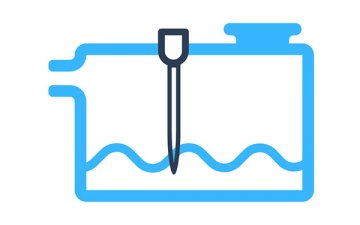
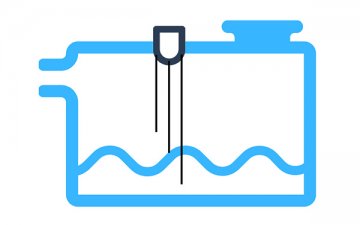
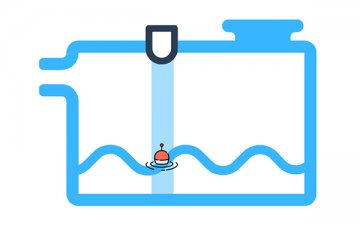
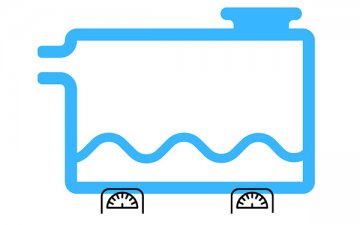
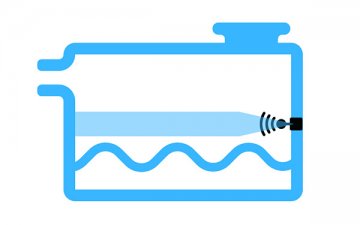
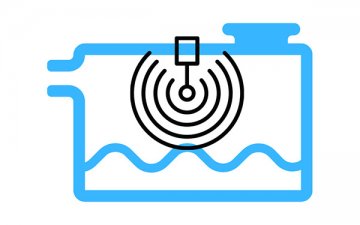
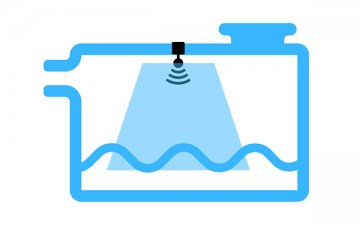
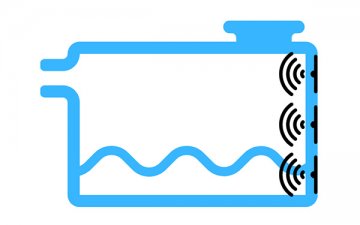
Optical Level Sensors
It is a point level method of liquid level sensing which uses the properties of light to detect the liquid level. It has a light emitter and a photodetector which measures the reflection of emitted light. Surely when a liquid is blocking the free/usual emission of the light the photodetector accordingly receives a different signal. It is technically an invasive method, however still quite economical and used even in relatively high temperature and pressure ranges. However, a disadvantage of the optical liquid level sensors is the low accuracy levels, detection issues with certain reflective surfaces as well as the issues in working in dirty or dusty environments.
Ultrasonic Level Sensors
Somewhat similar in principle with the optical level sensors, ultrasonic ones also emit waves and measure the reflection, however instead of the visual quantities ultrasonic level sensors emit ultrasonic waves, and monitor the strength of the reflected wave which provides an information of the distance between the sensor and the liquid. These are non-contact, continuous measurement systems with relatively higher accuracy which is an advantage, especially over the optical ones, however, these are rather expensive, can have issues with complex geometries of thanks and spaces of liquids and have compromised measurements in the case of foaming liquids. These also cannot work in vacuumed tanks. Another major disadvantage of coming with these sensors is the obstacle of measuring the water level when the tank is full (due to the “time of flight” measurement principle), as well as extensive waves of liquids.
Capacitive Level Sensing
The different levels of capacitance can provide real-time data of the liquid a capacitive sensor is submerged into. This happens thanks to the different dielectric constants of different materials where a capacitive sensor measures the change between the two electrodes that are submerged in the tank. Though these sensors require calibration per medium, capacitive sensors can be used to measure some solid materials (i.e., sand) alongside the liquids in pharmaceutical, wastewater, chemical, food, and other industries
Radar Level Sensor
These use similar principles, especially with the ultrasonic level sensors, however instead of ultrasonic waves, radar sensors transmit microwave frequency signals. The measured quantity, unlike the distance in the case of ultrasonics, is the time of the microwave signal returning to the antenna of the radar liquid level sensors. These have similar issues as the ultrasonic sensors in terms of the complex shapes of tanks, evaporating fluids, waves of the fluids, and cost, however, these can be used in a vacuum as well. Radar sensors find their best use in long-distance measurements of 1–50 m.
Vibration liquid level sensors
These use the vibration method of liquid level sensing which is not only useful for liquids but in some cases also for powders. These usually consist of a fork-shaped sensing system that vibrates at its usual resonant frequency, The change of the level affects the frequency thus showing the level change in a container, barrel, etc. This is a cost-effective and compact method used in construction, food and beverages and other industries, however, it requires direct contact with the material which in return provides certain limitations in wide use of the same industries, as well as in the cases with harsh environmental conditions. These also cannot provide continuous measurement, and require one switching point per device, making them point-detection level sensors.
Conductivity liquid level sensing
These measure conductivity or resistance between two electrodes of a probe. The moment a liquid covers one of the probes the circuit is complete, and the current can flow. The advantage of this system is the low cost, however, they can only work with conductive liquids and the probes are expected to erode overtime
Float liquid level measurement
It is an effective and widely accepted method for a variety of applications of high complexity that require fluid level detection. The method is rather simple if only the mechanical component is to be considered, as it usually consists of a large piece that raises or falls alongside the liquid. Usually, this method is simply mechanical, however, should it be paired with the right smart IoT solution, it can help access wider verticals.
Load level sensors
They are able to measure the weight of a tank according to the fill level of the tank. These are commonly attached to the support framework of the tank to be affected by the weight of the tank. If the material has a constant density the load sensor is able to monitor the level of liquids and solids alike, needs no contact with the material itself, and can be rather accurate. It is however not possible to measure the level of a variety of important applications i.e lakes, overall structures exposed to vibrations like most vehicles, etc.).
Float switches
They are one of the most cost-effective but also well-proven systems for liquid level measurements. These consist of a floating piece that has a magnet and a magnetic reed switch in safe housing. The moment it is out of water in a non-floating state the reed switch will open/close accordingly, indicating the level has been filled or drained from the space. Surely the monitoring option is crucial in these cases, and suppliers will offer a range of them (horizontal, side-mounted, vertically-mounted, etc.)
The Gamma Ray sensors
They usually consist of a gamma source, a detector, and a microprocessor accordingly. These systems use gamma energy sources, are mounted outside of the vessel (which is one of the biggest advantages they provide), and are there to emit energy through the walls of the tank or a vessel. This energy is directed towards the detector which is accordingly mounted on the opposite side of the emitter. The gamma energy can properly reach to the emitter when the tank is emptied, thus detecting the levels within the tank or a vessel.
The Liquid Level Sensing Market is Asking For It
All the research in the industry, finding out the most common use cases, industry applications, methods of measurement, and sensor solutions gives us an overview of which sensor to choose when it comes to liquid level sensing.
The devil, however, is in the details. When considering which sensor to choose to avoid corrosion and other harsh environmental factors, adjust the size and method of measurement for specific, niche use cases, types of tanks, pressure vessels, rivers nearby cities, etc., which is the level sensing system to choose?
Well, it is rather individual per use-case, as obviously, the challenges are in niche areas where all the commercially available sensing systems have failed, or in areas where the commercially available sensors are employed with a “good enough” precondition. The tier 1 players of the market which we went through at the beginning of this blog, are in constant search to find and adopt a relevant solution aimed to solve the otherwise unsolvable challenges, one that does not compete with the level sensors that are cheap, and do the job jus fine, and they look for this solutions as there is a clear gap in the market – whoever fills it first has exclusive access to success, at least for some period of time.
At RVmagnetics, we believe to have the exclusive solutions to otherwise unsolved issues in the liquid level sensor market, in the form of our own MicroWire sensors.
The sensors help with unsolved issues comes in different forms as those may be specific per customer, niche cases even within the market, such as measuring viscous liquids levels, foamy liquids level measurements, etc., however, the biggest added value is the combination of multiple high-demand features expected from level sensors such as the combination of miniature size, continuous measurement, resistance to harsh chemical environments, no added risk of spark or ignition in flammable liquids with highly competitive cost on a unit, and other features combinations of which has been unreachable in the market thus far.
These are thin and tiny passive sensors, which do not need to have contact with the sensing system to provide measurements as the signal is processed through a magnetic field. This is an additional benefit for measuring potentially flammable or toxic substance levels within containers, such as hydrogen pressure vessels.
The MicroWire sensors check the blanks in terms of the market demand mentioned at the start of the article, such as the size reduction, and option for continuous non-invasive measurements, however, it is also “not afraid” of contact with harsh chemical and corrosive environments neither vacuum, steam, dust, awkward shapes of the containers will not affect the signal due to the magnetic principles!
The MicroWire sensor can provide liquid level measurements in multiple methods, including continuous liquid level measurement, point-level sensing of liquids, as well as float monitoring of liquid levels.
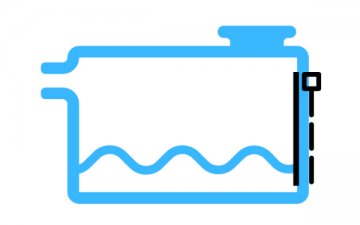
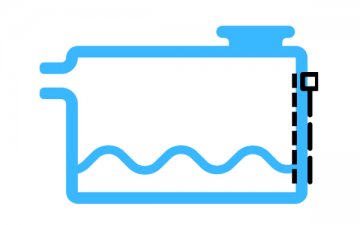
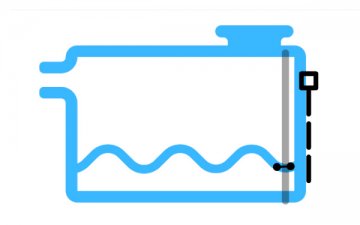
These added advantages are sponsored by the ability of the MicroWIre sensing head to receive accurate real-time data from multiple sensors at a time, with only one interface necessary.
RVmagnetics itself is an R&D service provider, thus we are able to fill our customers’ specific needs in fill level sense by custom-developing measurement systems based on their applications’ exclusive requirements. This includes the possibility of different fill level sensor solutions, than just the ones mentioned above (including float switch, vibration, and load monitoring methods).
Reach out to discuss the topic further.
